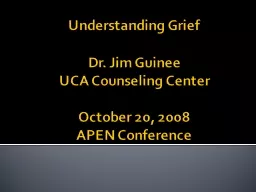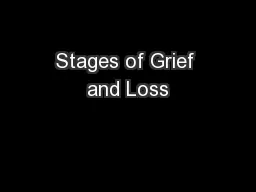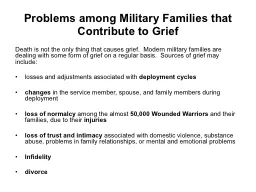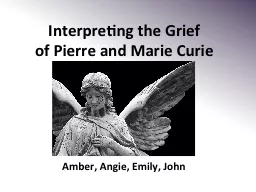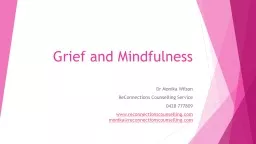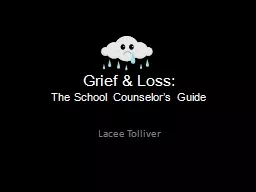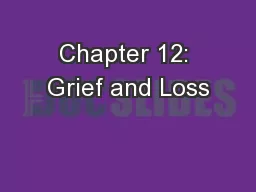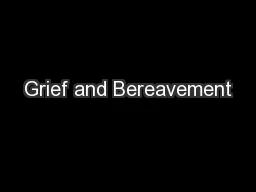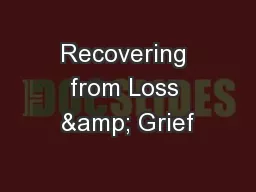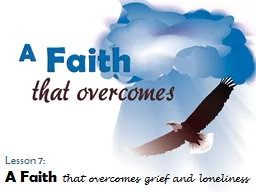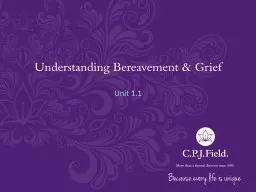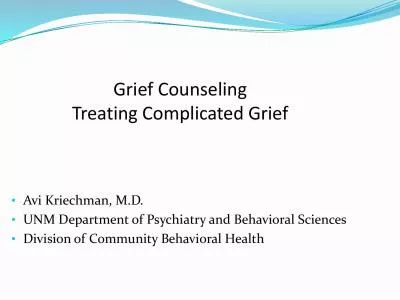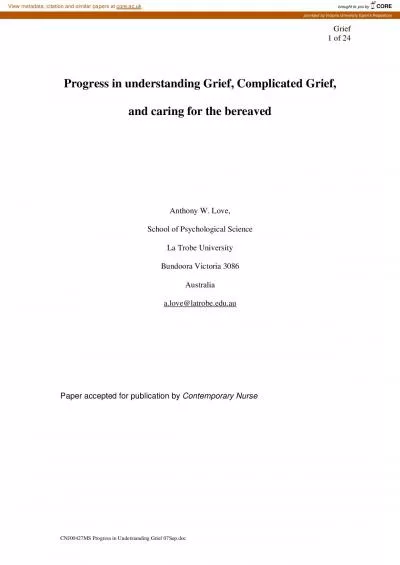PPT-Understanding Grief Dr. Jim
Author : myesha-ticknor | Published Date : 2019-03-15
Guinee UCA Counseling Center October 20 2008 APEN Conference f P lanning a trip Obstacles to planning Pervasiveness of denial Denial leads to living in the here
Presentation Embed Code
Download Presentation
Download Presentation The PPT/PDF document "Understanding Grief Dr. Jim" is the property of its rightful owner. Permission is granted to download and print the materials on this website for personal, non-commercial use only, and to display it on your personal computer provided you do not modify the materials and that you retain all copyright notices contained in the materials. By downloading content from our website, you accept the terms of this agreement.
Understanding Grief Dr. Jim: Transcript
Download Rules Of Document
"Understanding Grief Dr. Jim"The content belongs to its owner. You may download and print it for personal use, without modification, and keep all copyright notices. By downloading, you agree to these terms.
Related Documents

